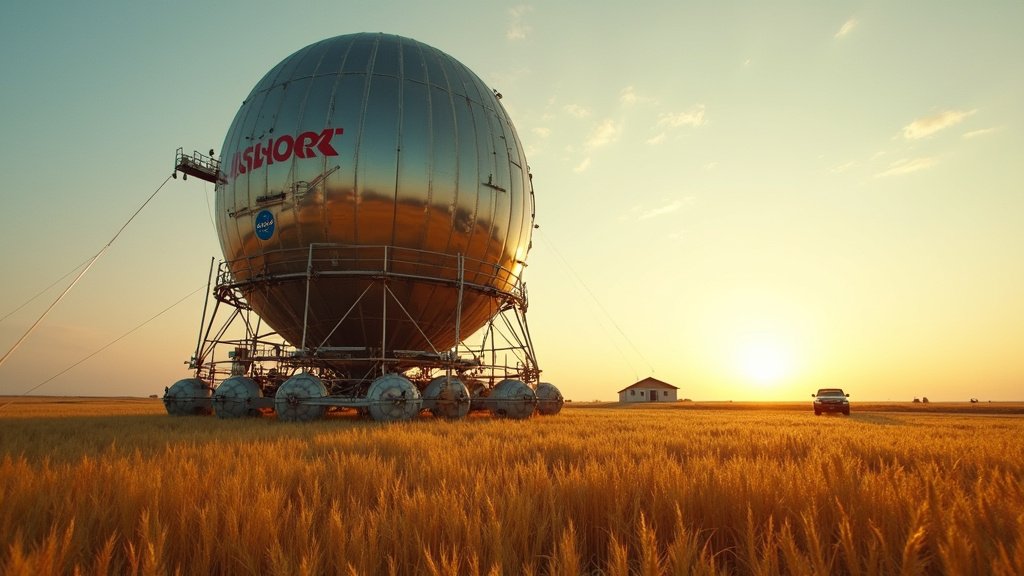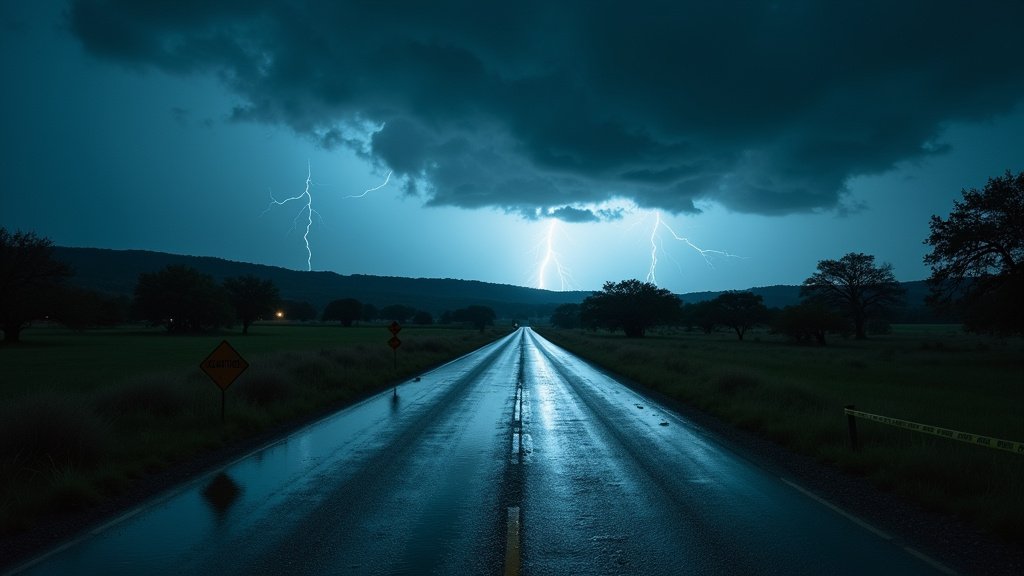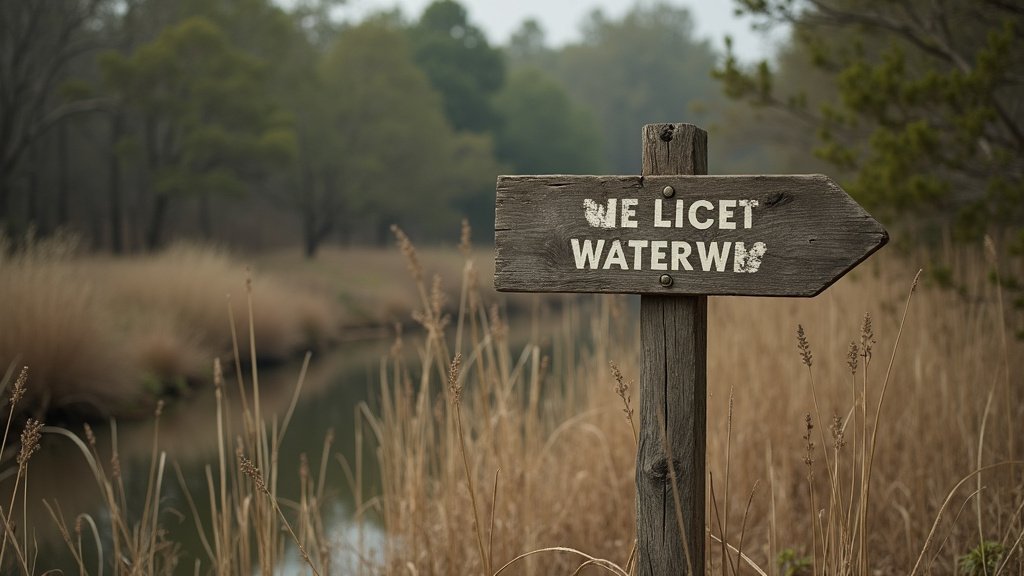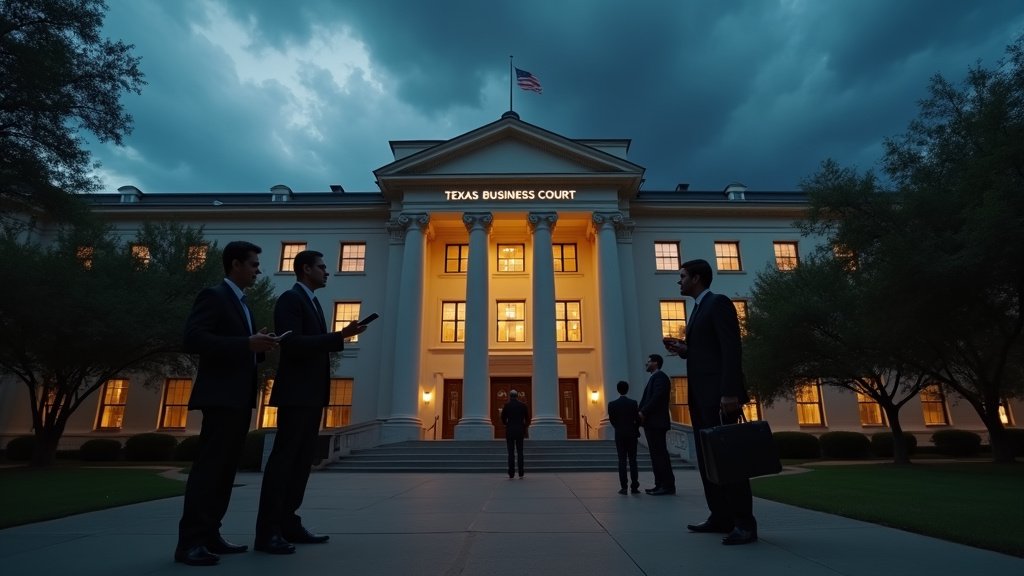A quiet morning on a West Texas farm was dramatically interrupted when a large piece of NASA research equipment, comparable in size to an SUV, descended from the sky and landed on private property near Edmonson, Texas. The unexpected arrival of the high-altitude balloon payload captivated the landowners and highlighted the fascinating, albeit sometimes unpredictable, nature of scientific exploration. This incident is currently top news, drawing attention to NASA’s extensive work in near-space research.
An Unexpected Arrival in Edmonson
Ann Walter, a resident of Edmonson, Texas, and her family were going about their day when they observed a large object descending under a parachute. “Hurry and come here!” her husband, Hayden, called out, signaling the extraordinary sight unfolding above their Hale County home. The object, adorned with NASA stickers, was massive, with the parachute alone estimated to be around 30 feet in diameter. Initially unsure of its origin, the family documented the descent with photographs and videos before the equipment disappeared from view, presumed to have landed nearby. The Walter family’s keen observation and prompt action led to the discovery of the landed payload in a neighbor’s wheat field.
NASA’s Scientific Mission Revealed
Following the discovery, the Hale County Sheriff’s Office was contacted. Deputies confirmed that NASA was, in fact, searching for a piece of scientific equipment that had been lost during a recent high-altitude balloon launch. Representatives from NASA’s Columbia Scientific Balloon Facility (CSBF) soon reached out, confirming that the landed object was indeed part of their research efforts. The equipment is designed to study astronomical objects and atmospheric conditions, utilizing telescopes to gather critical data about stars, galaxies, and black holes. This type of research is vital for expanding our understanding of the universe and Earth’s atmosphere.
The balloon carrying the payload was launched the day before its unexpected landing from Fort Sumner, New Mexico. High-altitude balloons are a cornerstone of NASA’s scientific endeavors, offering a cost-effective and relatively quick method to conduct research in the near-space environment, reaching altitudes of up to 120,000 feet. These missions support fundamental scientific discoveries and test new technologies for future space missions.
The Role of the Columbia Scientific Balloon Facility
The Columbia Scientific Balloon Facility (CSBF), located in Palestine, Texas, is a critical component of NASA’s scientific balloon program. Established in 1961 and later renamed in honor of the Space Shuttle Columbia crew, the CSBF is responsible for providing comprehensive support for these high-altitude missions. Its services include launch, tracking, control, airspace coordination, data retrieval, and payload recovery. The facility, managed by Peraton under the administration of NASA’s Wallops Flight Facility, plays a crucial role in enabling scientific investigations from Earth’s atmosphere to the far reaches of the solar system and beyond.
CSBF launches balloons capable of carrying payloads weighing up to 8,000 pounds to altitudes where the atmosphere is extremely thin, providing a unique vantage point for scientific instruments. These balloons, often made of thin polyethylene film, can expand to diameters rivaling that of a football stadium when fully inflated at altitude.
Recovery and Implications
Once the location of the landed equipment was identified, a NASA team arrived with a truck and trailer to safely recover the research apparatus. The Walter family’s documentation and cooperation were instrumental in facilitating a swift retrieval. While such landings on private property are rare, NASA has established protocols for payload recovery, emphasizing good faith efforts to contact landowners and ensure safe retrieval. The facility’s general flight paths, driven by wind currents, indicate that payloads typically land within neighboring states like Texas, New Mexico, and Arizona, though deviations can occur.
Incidents like this, though uncommon, underscore the dynamic nature of balloon-based scientific missions. NASA emphasizes that scientific balloons are a vital, low-cost alternative to orbital missions, enabling a wide array of research in astrophysics, heliophysics, and atmospheric science. The data collected from these missions has led to significant scientific breakthroughs, including contributions to understanding the Big Bang and the curvature of the universe.
A Glimpse into Near-Space Science
The recent event in Edmonson, Texas, serves as a compelling reminder of the ongoing, often unseen, scientific work conducted by NASA and its partners. The unexpected touchdown of the research equipment not only provided a unique experience for the Walter family but also brought attention to the sophisticated and vital role that high-altitude ballooning plays in advancing our knowledge of the cosmos and our own planet. As NASA continues its mission to explore the unknown, such landings, while unplanned, offer a tangible connection between cutting-edge science and the communities on the ground. This news is a trending topic, shedding light on the challenges and triumphs of scientific exploration.






